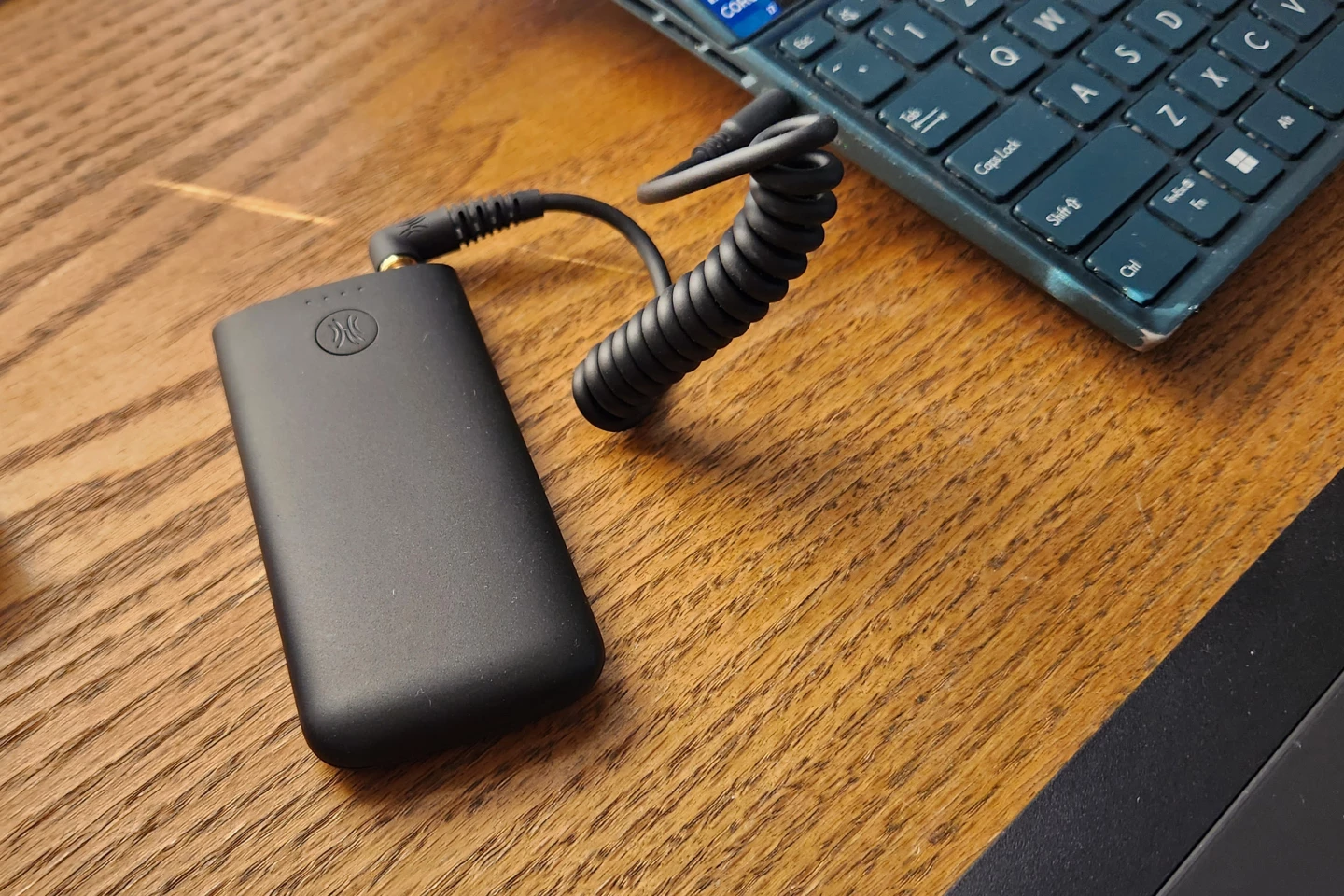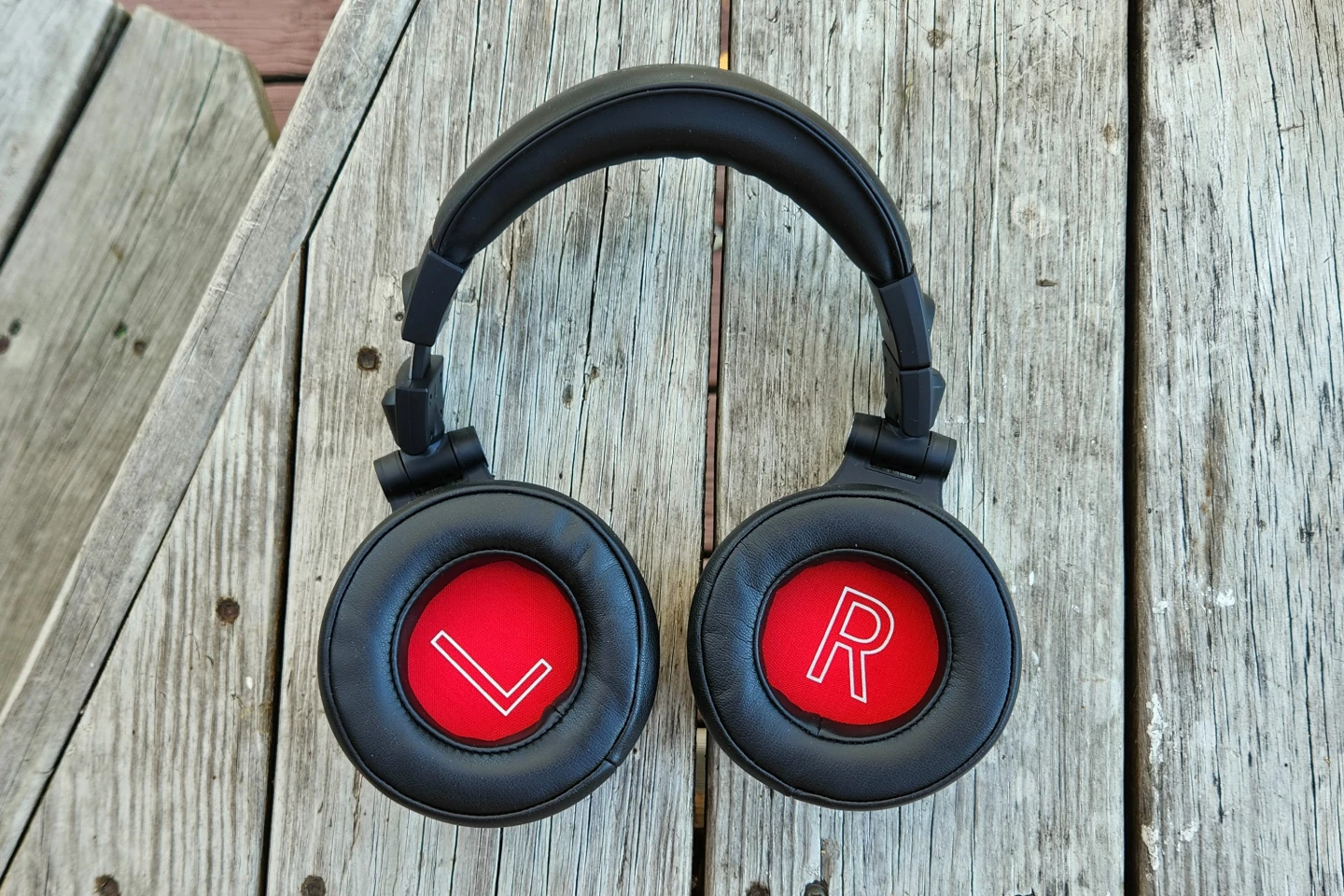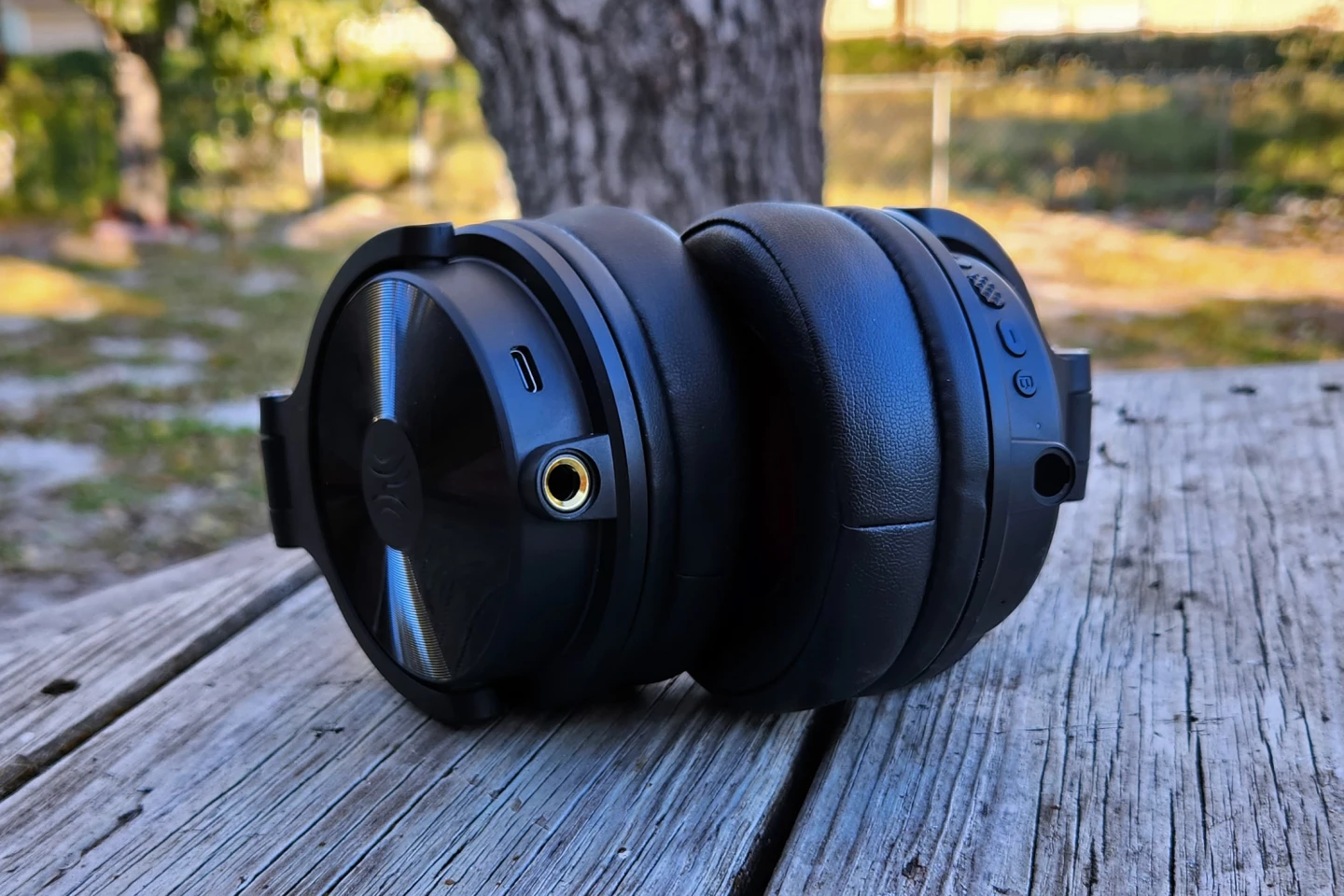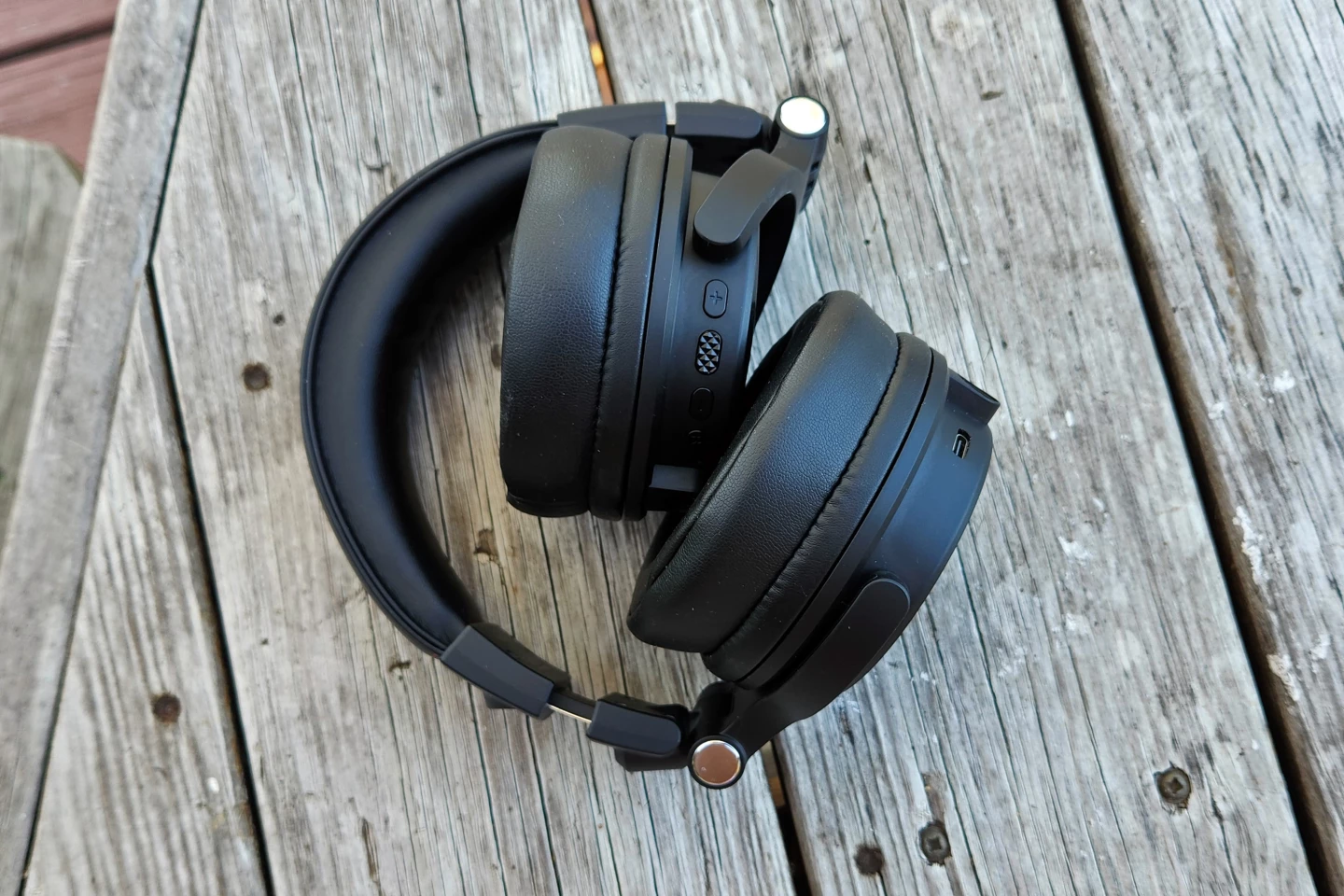So I’ve had these headphones for almost two weeks now. When I got them, I chucked it onto the charger until it said it was fully charged. Since then, I’ve worn them every single day, 95% of the time in Bluetooth mode connected to everything from my phone to my laptop to my projector. Sometimes for an hour, sometimes most of the day. And I haven’t charged ’em since.
When I’m pecking away at my keyboard, writing these articles, I always have headphones on with music playing (Echo and the Bunnymen, at this exact moment). Normally, I alternate between my Bose Q15 (yes, old-school but still amazing) when I really want to just be in the music. Sometimes, when I still need to be aware of my surroundings, I use my favorite set of headphones I’ve ever had (and the absolute most crap-sounding headphones I’ve ever had) – Shokz OpenRun.
OneOdio reached out to me asking if I’d like to give the US$169 Studio Max 1 cans a shakedown.
“Why yes, I’d love to, thank you.” Here are my honest thoughts:
“She wore a raspberry beret”
First of all, the battery life is absolutely insane. OneOdio claims 120 hours of listening in Bluetooth mode. I’ve put in at least 40 hours of music and movies – at volumes that make the wifey cringe (there’s no other way to really appreciate music, in my opinion), and as I’m writing this, the headphones are still at 74%. That alone just blows my mind. And if the battery runs out eventually, you can still use them hardwired without power, like the good old days.
JS @ New Atlas
The Studio Max 1 has a couple more clever tricks up its sleeve that really set it apart from other budget studio cans.
They support Bluetooth 5.3 for standard wireless mode. That’s great, because it works with nearly everything, it’s smarter at switching between devices, and it uses less battery … but Bluetooth still has a fatal flaw in the name of ~400 ms lag. Something you’ll never notice while leisurely listening to music.
If you’re an avid gamer, you’ll notice, for sure. And if you’re a musician, DJ, or mixer, then Bluetooth is an absolute no-go. That 0.4 of a second lag means the difference between a Grammy and a garage band. Or between an MTV Music Award or hitting the mute button because you’re getting a headache from all the missed notes.
I tried playing my Roli Seaboard 2 with the Studio Max 1 in BT mode. It was a mess.
However, the OneOdio headphones include not only a 3.5-mm jack and a 1/4-inch jack in the cans for wiring into almost anything short of an XLR, but they also include an ultra-low latency dongle that runs on OneOdio’s proprietary 2.4-GHz signal. It plugs into your output device and wirelessly connects to the headphones. It’s 20 times faster than Bluetooth at 20-ms latency.

JS @ New Atlas
Game. Changer. Finally, a wireless ear-rig that doesn’t feel half a beat behind.
I’m always wired up whenever I’m mashing keys. So, firing up wireless cans on a keyboard or my Akai MPK pad that actually worked? It was liberating. Though I kept finding myself brushing the non-existent cord off my left shoulder. Decades-long habits are hard to break.
They also support LDAC for “high-res” audio up to 990 kbps. Not quite lossless, but just about as close as you’ll ever get with Bluetooth.
“Can you hear me?”
The Studio Max 1 sounds exactly like anything marketed as “studio” should sound, in my opinion: Flat and honest, but responsive to EQ changes. They don’t punch the lows or HPF the highs. There’s no “surround sound” mode that makes it “feel like you’re there” using digital signal processing. The Studio Max 1 simply reproduces the signals being sent out by your listening device. I like this very much.
That’s where the art of dialing in your EQ comes in. Even just using the generic presets like “Rock” that boosts bass and treble while dropping mids … or “Voice,” that does the exact opposite – and the Studio Max 1 will respond beautifully.

JS @ New Atlas
Brands like Beats by Dre, while they sound amazing, often are tuned to lean bass-heavy. Great for casual listening, but not so great when you’re trying to fine-tune music on the mixer.
“Let’s get physical”
The headphones are big. And not just in a studio monitor headphone kind of way. They appear as though they’d be really heavy at a glance, but they’re not. It’s surprisingly light for its size. While light, they don’t feel plasticky-cheap either. The build quality is representative of what I expect from a nearly $200 headphone.
The Studio Max 1 also has a built-in mic, so if you happen to be hanging out, listening to some tunes on your phone, you can take a call without having to shed your ‘phones.

JS @ New Atlas
As fairly standard with wireless headphones, they have a volume up, down and a power button on the side (that also serves as play/pause). The power button has a unique texture on it, making it very easy to identify by touch alone. It also has a Bluetooth on/off button that also serves to put the cans into low-latency mode. All of the buttons are different sizes and shapes, which makes it easy to find the one you’re looking for without actually having to look.
Back to the “headphones are big” comment I made: These are the first headphones I’ve ever owned that I don’t have to extend to make them slightly bigger. I don’t have an especially big head. I mean, I wear a large motorcycle helmet and a L/XL Flexfit hat.
The ear cup size and shape are pretty much perfect. They’re absolutely comfortable to wear for hours on end without any fatigue. That being said, the headband is a bit odd. I have to rotate the headphones forward more than I feel is normal for them to stay securely on my head. Even so, a quick doo-wop will result in the headband shifting and feeling like the headphones are about to fall off.
I don’t do a lot of headbanging when listening to music, personally, but I could see it being an issue for some. Wifey wears a medium helmet and said they sound really good, but don’t fit her noggin very well. “Too big.” Even so, these aren’t the kind of headphones you’d want to be all that active in to begin with.

JS @ New Atlas
“The Final Cut”
The 50-mm drivers are fantastic, reproducing sound as it was meant to be heard by the people that made it. The features are a notch above, especially the low-latency mode. That alone makes these inexpensive headphones feel like they’re worth at least thrice the price. And the price is really hard to beat. For under $200, they not only rock for chilling out and listening to music, but actually doing music.
Product page: OneOdio Studio Max 1 & Amazon
If you’re looking for some highly-rated noise-cancelling cans that you can run with and won’t break the bank, check out Bronwyn’s review of the OneOdio Focus 6 headphones.
New Atlas may receive commission if you purchase through our links; this does not influence our review. Our reviews are impartial and our opinions are our own.


